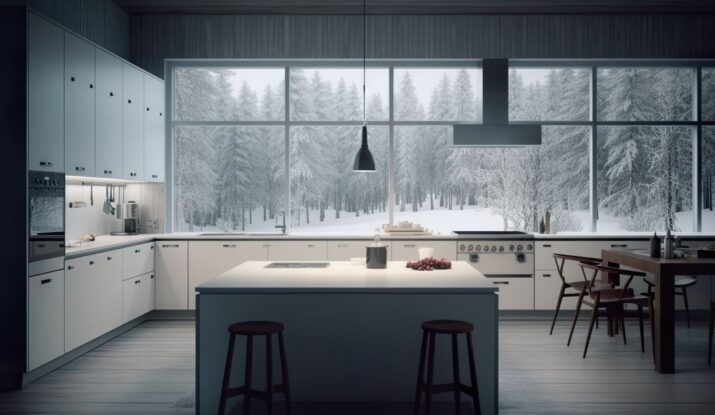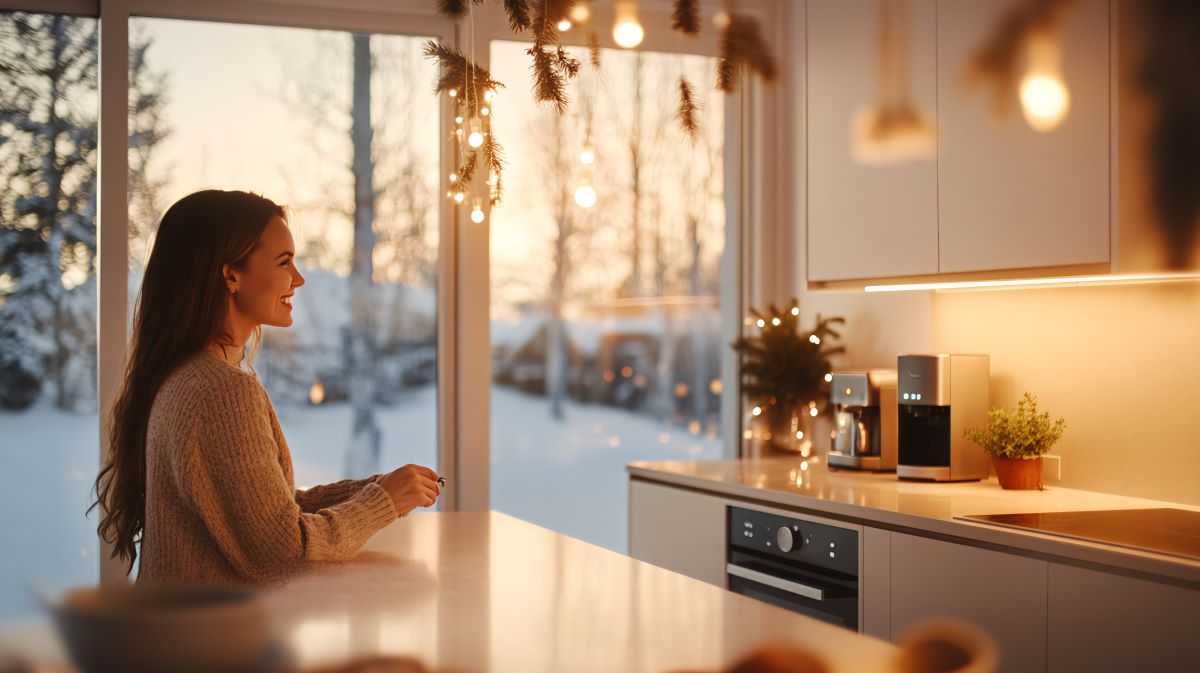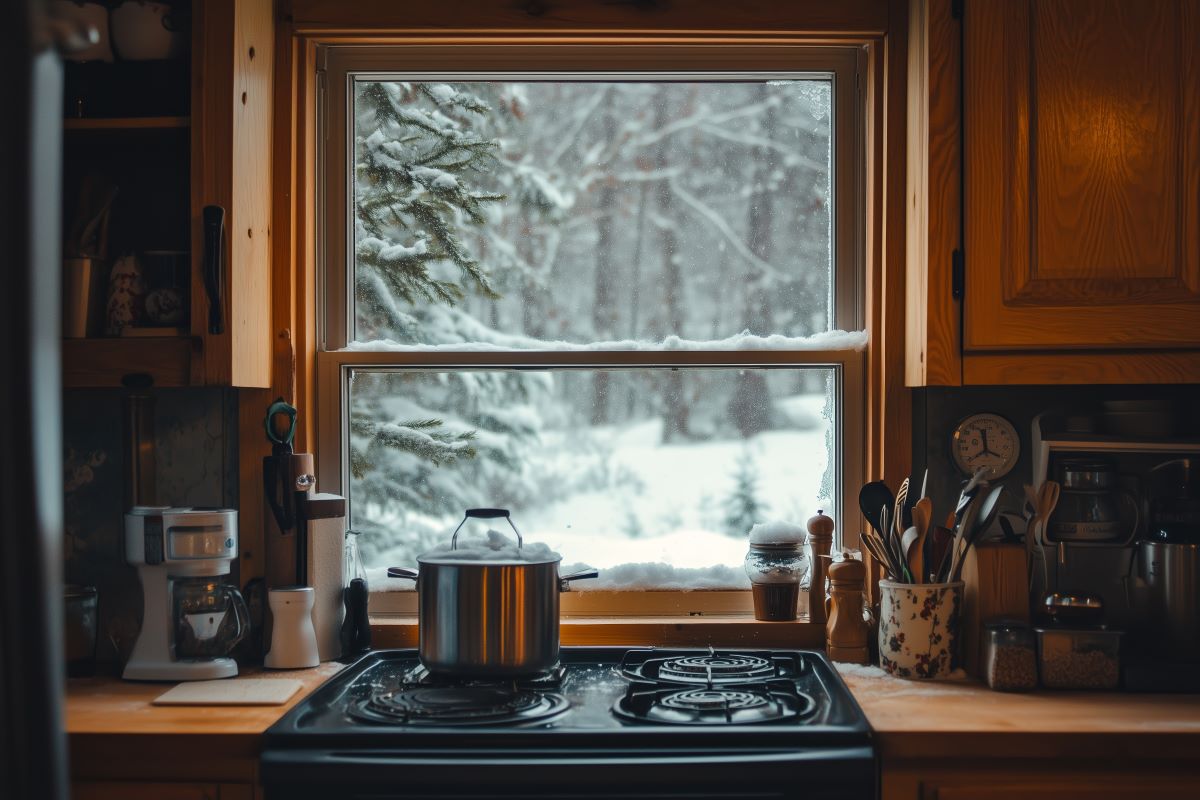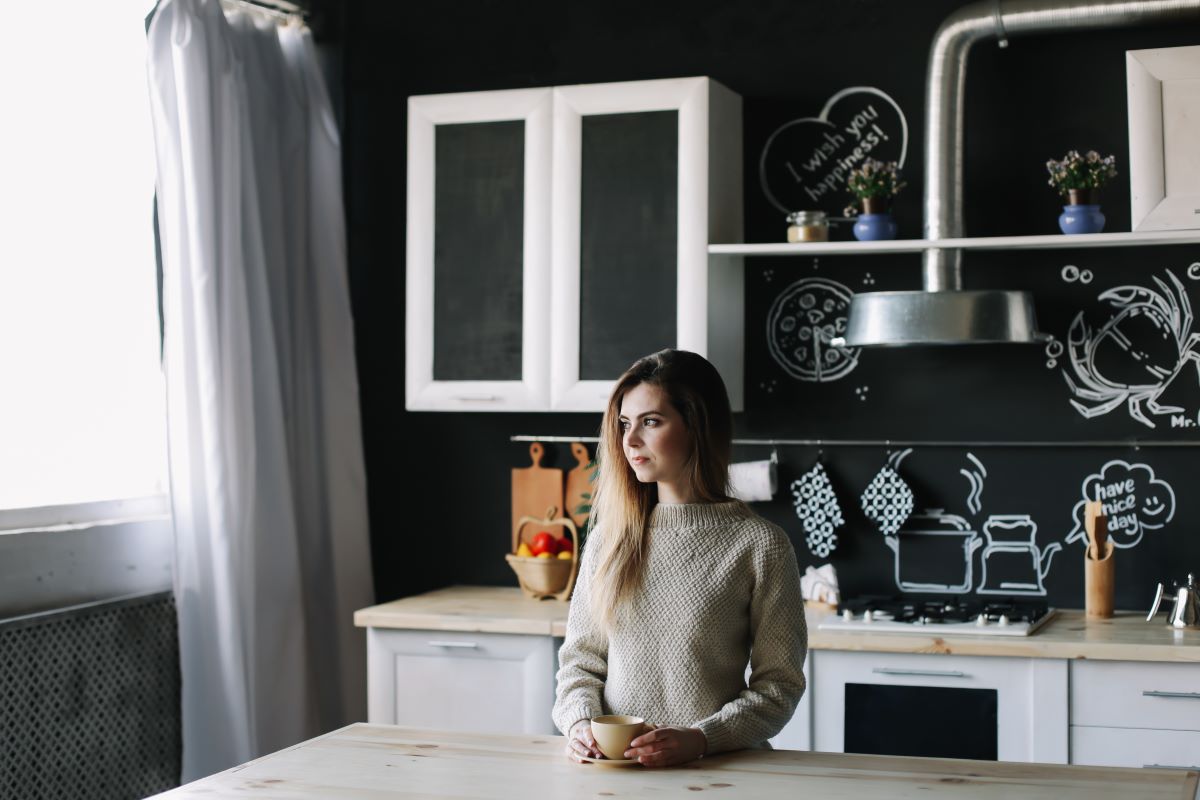When cold weather hits, one of the easiest ways to protect your home is knowing why open cabinets when cold can make a big difference. Many homeowners don’t realize that opening cabinet doors allows warm air from your heating system. It helps to circulate around the water pipes. These pipes are located under sinks and along exterior walls. It helps prevent frozen pipes and costly burst pipes throughout severe winters. Frozen pipes can be a significant expense in costly repairs and huge hassle.
This guide from Dr. Cabinet explains the importance of keeping cabinets open during freezing temperatures and shares expert tips including pipe insulation, faucet drip, and other preventive measures. Let’s explore the top reasons for opening cabinet doors open matters, how to protect your plumbing, and additional steps you can take to keep your home safe this winter.
Frozen Pipes and Burst Pipes: What Homeowners Must Know
Sometimes, the water inside them freezes and expands. This expansion applies force on the pipe walls. As a result, a serious problem like frozen pipes can occur. Therefore, the floors, the walls, and the cabinetry will be ruined by letting out water. The experts note that burst pipes are one of the costliest and inconvenient home plumbing solutions in cold weather. Pipes that are in unheated areas or exposed on the exterior walls are specifically susceptible.
Need expert advice on cabinet renovations and pipe safety? Call Dr. Cabinet and let our pros help safeguard your home this cold season.
How Freezing Temperatures Affect Your Plumbing System
Throughout freezing temperatures, the threat to your pipes increases with sharpness. Pipes in crawl spaces, garages, or inside base cabinets are more exposed to cold drafts. The U.S. Department of Energy confirms that pipe insulation combined with letting warm air circulate near vulnerable pipes helps maintain safe temperature levels and prevent freezing.
Extreme Cold and Its Impact on Vulnerable Pipes
Periods of extreme cold and hard freezes significantly increase the risk of frozen pipes. During these times, keep your cabinet doors open and consider increasing insulation efforts. Pay particular attention to pipes located along exterior walls or inside unheated cabinets open.
Ready to winter-proof your kitchen? Contact Dr. Cabinet today for a free consultation on cabinet and pipe protection solutions!
Why Open Cabinets When Cold
Opening cabinet doors lets warm air circulate with freedom. This air circulates around the pipes located inside your kitchen or bathroom. Many water pipes run along exterior walls or inside base cabinets, which are prone to cold drafts. When cabinets open, heat can reach the pipes. It reduces the risk of frozen pipes.
According to experts, this simple action is one of the most effective ways. This helps to prevent frozen pipes in unheated areas. If you leave cabinets open during the winter months or even the winter long lets air circulation around the pipes. There’re some other measures like letting faucets drain and insulating exposed pipes. This method lowers the chance of cold-weather damage with significance.
Preventive Measures Alongside Cabinets Open
Opening cabinets open alone might not be enough during extreme cold. Complement this with:
- Pipe insulation applying foam rubber or fiberglass sleeves
- Applying heat tape on vulnerable metal pipes
- Filling specific spaces or cracks around pipes on exterior walls
These combined methods build a strong guard against pipe freezing and bursting.
Faucet Drip: A Simple Yet Effective Freezing Prevention
A gentle faucet drip keeps water moving through your pipes. So it reduces the chance of freezing. This technique works well during hard freezes. It is highly recommended by plumbing pros and Dr. Cabinet experts alike. Letting your water flowing slowly through taps can save you from costly damage caused by frozen or burst pipes.
Frozen Pipe Prevention Methods
| Method | Benefits | Best For | Cost |
| Opening Cabinet Doors | Circulates warm air to pipes | Pipes under sinks and cabinets | Free |
| Faucet Drip | Keeps water moving | All indoor pipes | Low |
| Pipe Insulation | Prevents heat loss | Pipes in unheated areas | Moderate |
| Heat Tape | Provides active heating | Exposed metal pipes | Moderate-High |
| Sealing Gaps | Blocks cold drafts | Around pipes and exterior walls | Low |
Protecting Indoor Pipes in Unheated Areas
Indoor pipes that are located in a garage of crawl spaces are very vulnerable to the cold air. It makes them vulnerable to freezing. One effective method to keep pipes warm is using insulation sleeves. It’s available at most hardware stores. Opening nearby cabinet doors helps circulate warm air, exactly why open cabinets when cold.
If temperatures drop, disconnect garden hoses. Then let faucets drain, and check for signs before water freezes. These steps help prevent pipes from damage. They also lessen the possibility that pipes burst throughout severe winter nights.
Planning for Pipe Safety
When adding new cabinets to existing kitchen cabinets during a kitchen renovation, always plan for pipe access and airflow. Proper cabinetry design for airflow or built-in ventilation systems play a vital role. It can prevent pipes from getting trapped in cold zones. This ensures warm air circulation in cold weather. So this reduces the chances of freezing. Remember, why open cabinets when cold is a safety tip rooted in keeping pipes safe. It’s crucial when integrating new structures. Proper planning safeguards your kitchen even during the harshest cold weather.
Winter Pipe Protection Checklist
- keep cabinet doors open throughout cold wave
- Insulate vulnerable pipes with sleeves or foam
- Use heat tape on exposed pipes
- Permit your faucet drip throughout freezes
- Crack seal around water pipes and the exterior walls
- Regularly inspect cabinets open for moisture or damage
The Cost of Ignoring Frozen Pipes and Burst Pipes
Repairing or replacing plumbing and damaged cabinetry is quite expensive. It often costs thousands. When you neglect the risk of freezing, it may lead to expensive repairs. Burst pipes lead to destruction of floors, walls, and cabinets.
Cabinet Doors Open: How They Help Prevent Frozen Pipes
Your kitchen or bathroom cabinet doors act as obstacles hindering heated air from passing your pipes. You allow warm air to surround the pipes by keeping cabinet doors open. It happens most often to those near exterior walls. This simple step can reduce the chances of pipes freezing in a dramatic way. Experts recommend leaving cabinet doors open during extreme cold spells and overnight freezes.
Common Mistakes That Lead to Frozen Pipes
- Closing cabinet doors during cold spells
- Skipping pipe insulation
- Ignoring small cracks or drafts near plumbing
- Not using a faucet drip during freezes
What to Do If Pipes Burst
If you discover a burst pipe:
- It is highly important to shut off the main valve and prevent water flow.
- Call a pipe fitter and your expert if cabinetry faces damage.
- As a precaution, initiate drying and rehabilitation of the affected area with the earliest opportunity to deter the growth of molds.
Whether you live in those regions which are subjected to frequent freezes, make no hesitation in consulting an expert to install pipe insulation and heat tapes. Experts can assess vulnerable areas and install cabinetry designs that protect pipes from cold.
Protect your pipes and enhance your kitchen design with Dr. Cabinet. Book your free quote and get relief this winter!
Using Heat Tape and Insulation for Added Protection
Heat tape introduced today heats up pipes automatically when it is cold. With the pipe insulation, it makes a good insulation on the exposed pipes in unheated areas. Why open cabinets when cold? Because it helps retain that heat near plumbing in freezing zones. During harsh winter weather, pairing heat tape with insulated outdoor faucets keeps vulnerable spots safe. This approach is especially crucial when low temperatures linger for several days.
FAQs
Q1: Why open cabinet doors when cold weather hits?
Once the cabinet doors are opened then warm air can move around pipes particularly those that are fixed against the exterior walls avoiding freezing and burst pipes.
Q2: Can closing cabinet doors cause frozen pipes?
Yes, closing cabinet doors traps cold air, preventing warm air circulation, increasing freezing risk during extreme cold.
Q3: How to recognize frozen pipes?
Check for an absence of water flow, frost on pipes and strange sounds. A common problem is frozen pipes and no water coming out of your faucet or reduced flow.
Q4: How can cabinet renovation prevent frozen pipes?
Cabinet Renovation Ideas that improve airflow and pipe access reduce freezing risks. Proper layout and ventilation help maintain safe pipe temperatures.
Q5: How can room temperature and layout affect pipe freezing?
A warm room and proper layout that promotes heat circulation around pipes significantly reduce freeze risk.
Q6: Can decorative elements like brown or blue shades affect pipe safety?
Although the color of decor doesn’t influence freezing directly, having areas warm and aerated behind cabinets or island units is critical.
Conclusion
Knowing why open cabinets when cold is crucial to protecting your home from frozen pipes and burst pipes in winter. Opening cabinet doors open lets warm air reach vulnerable plumbing, preventing costly water damage. Combine this simple action with pipe insulation, faucet drip, and sealing drafts for the best defense.
When planning a kitchen renovation or adding new cabinets to existing kitchen cabinets, consider Cabinet Renovation Ideas that allow proper airflow and easy pipe access. Don’t wait for winter damage. Take proactive steps today.
For expert advice, professional pipe protection, and custom cabinetry solutions, contact Dr. Cabinet. Our team delivers durable, stylish, and safe kitchen designs built to withstand cold winters.




